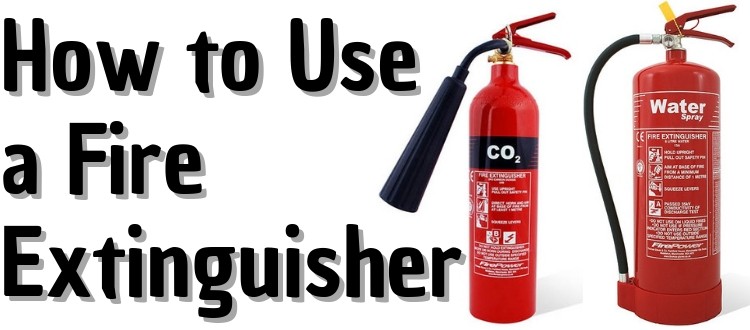 It is said that when a fire is started, it has the potential to double in size every 60 seconds. So, acting fast is something that you will most definitely need to do. But, knowing how to use a fire extinguisher will certainly go a long way in the event of a fire. If you get things right, then you have the power to stop a small fire becoming one that is way out of your control.
It is said that when a fire is started, it has the potential to double in size every 60 seconds. So, acting fast is something that you will most definitely need to do. But, knowing how to use a fire extinguisher will certainly go a long way in the event of a fire. If you get things right, then you have the power to stop a small fire becoming one that is way out of your control.
However, there are some important things that you need to know about fire extinguishers, as there are many types which each serve a different purpose. If you happen to choose the wrong fire extinguisher for a certain type of fire, then you might just end up making matters far worse. But, it really doesn’t have to be that way. Continue reading to find out how to use a fire extinguisher appropriately and effectively.
Which Extinguisher to Use for Which Fire
First things first, it is important for you to know that there are different types of fire. This includes the following:
- Class A: Fires which involve solid organic materials including paper, wood, or cloth.
- Class B: Fires which involve flammable liquids including petrol, paint, and oils.
- Class C: Fires which involve gases.
- Class D: Fires which involve metals.
- Electrical Fires: Fires which involve any live electrical equipment.
- Class F: Fires which involve cooking oils such as in deep-fat fryers.
Now that you are aware of the different classes of fires, you’ll need to know which extinguisher to use depending on the scenario. Many fire extinguishers found in homes and public spaces are equipped to handle class A-C fires, and so they are commonly referred to as Class ABC extinguishers. In an organisation, you’re likely to find extinguishers hung on the wall or placed on fire extinguisher stands along the emergency exit route and be specific risks.
Of course, it is important to realise that whichever fire extinguishers you have access to, they are regularly maintained and that they are appropriately placed within your building. Here are the five most-common types of fire extinguishers that are available:
- Water Extinguishers – for Class A fires involving paper, wood, and textiles.
- Foam Extinguishers – for Class A and B fires, this includes solids such as wood and paper, as well as for liquids such as petrol and diesel.
- CO2 Extinguishers – for live electrical equipment fires.
- Wet Chemical Extinguishers – for Class F fires which involve cooking oils or fats.
- Powder Extinguishers – for Class A, B, and C fires, as well as electrical fires (although no longer recommended for use in confined areas).
How to Use A Fire Extinguisher
Now that you have discovered which fire extinguisher to use depending on the situation, you will need to know exactly what to do when you are tasked with putting out a fire. An easy way to remember how to use a fire extinguisher is with the PASS acronym. This involves the following steps:
- Pull the pin in the handle.
- Aim the nozzle at the base of the fire.
- Squeeze the lever slowly.
- Sweep the extinguisher from side to side.
If you need further advice or you have more questions regarding using fire extinguishers, learn more from our FAQs, browse our fire extinguisher range or get in touch with our expert team.